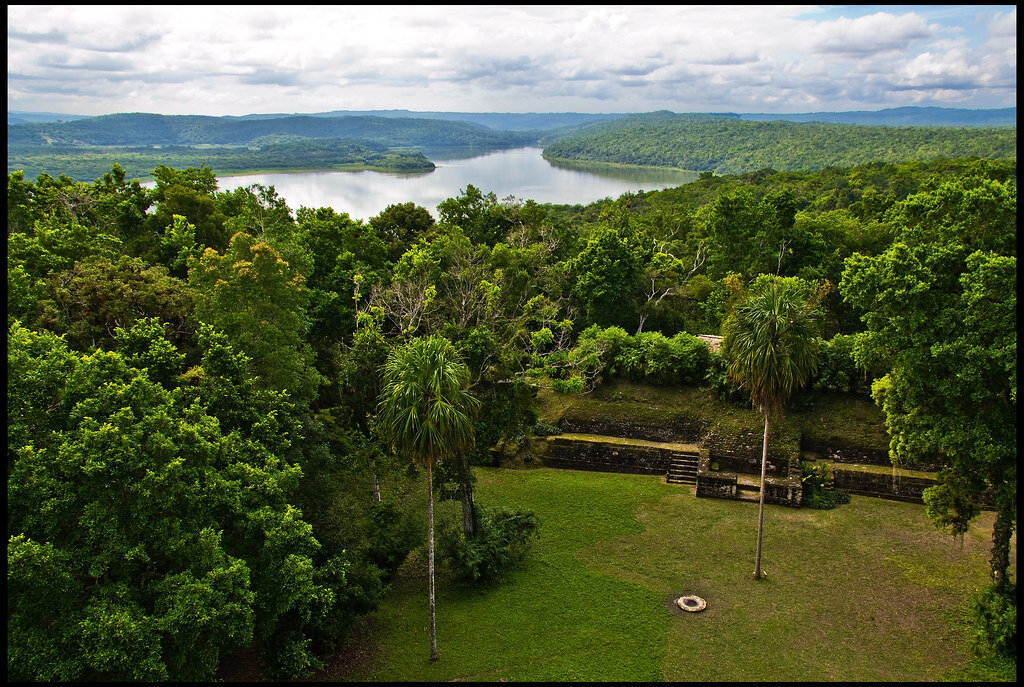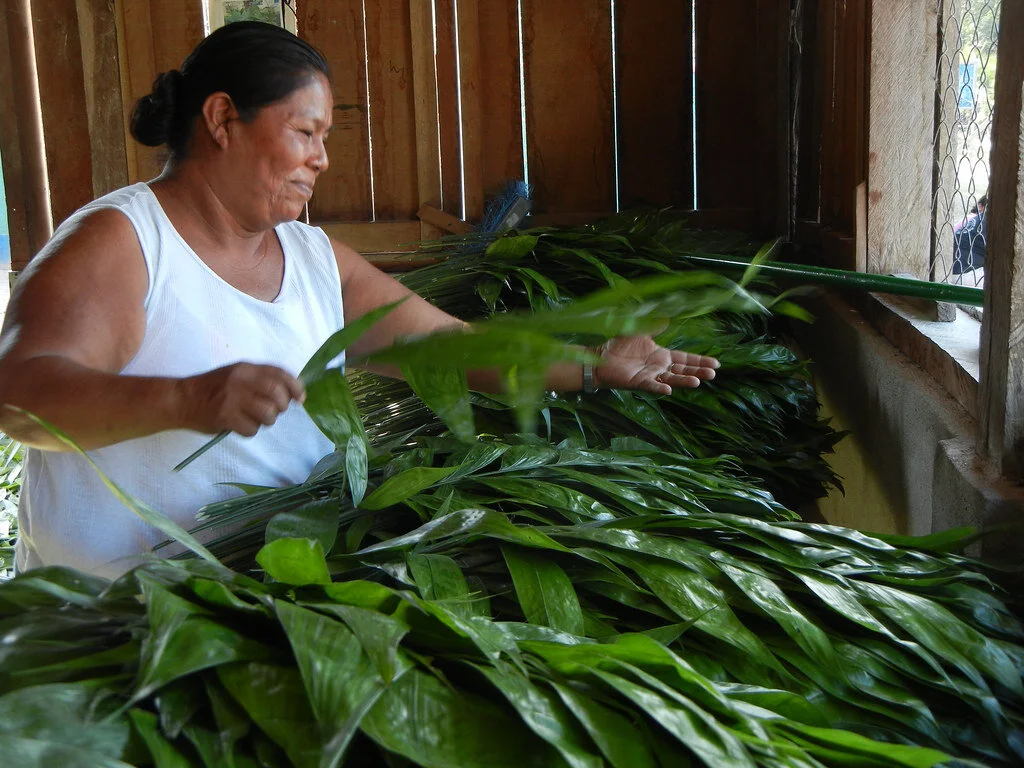Indigenous guardians in Guatemala's Maya Biosphere Reserve combat deforestation, protecting biodiversity and cultural heritage.
The North Acropolis at Guatemala’s Yaxha archaeological site. Guillen Perez. CC BY-ND 2.0.
Located in northern Central America, Guatemala’s diverse rainforest has become one of the world’s most prominent biodiversity hotspots. The Maya Biosphere Reserve (MBR) covers over 8,000 square miles and takes up one-fifth of Guatemala’s overall land. It is the largest protected area in Central America and boasts many Indigenous populations. The MBR houses countless endangered species of plants and animals and encompasses ancient archaeological sites that belonged to the Mayas thousands of years ago. Being a highly concentrated area for biodiversity, it is one of Earth’s largest carbon sinks, or areas that absorb more carbon than they produce. So, its protection is necessary to battle Earth’s current climate crisis.
Mayan ceremony in front of a temple. Guillen Perez. CC BY-ND 2.0
Although an environmental behemoth, the MBR is surprisingly vulnerable if left unprotected. Chief among concerns is its location along a major drug smuggling route. Narcotraffickers have long tried to create landing zones for planes by bribing communities and governments, and have also been willing to threaten the lives of local people.
Zero Fires - Forest defenders of the Maya Biosphere Reserve
View of a Mayan temple. Guillen Perez. CC BY-ND 2.0
In the 1990s, the Guatemalan government granted rights to the Indigenous people living within the forest to extract the park’s natural resources as long as they did so sustainably. These communities have treated the forest, their livelihood and home, with the utmost respect. The “Forest Guardians” have increased forest cover by the equivalent of 740 soccer fields.
The Maya Biosphere Reserve is divided into three types of zones. It is forbidden to log, extract resources or live within the “Core Zone” that makes up one-third of the park. The “Buffer Zone” takes up about one-quarter of the land and stands as a barrier between the Core Zone and what is known as the “Multiple-Use Zone.” The Multiple-Use Zone covers about 40% of the park and is where concessions take place.
Concessions are where the Indigenous people and local communities are allowed to extract natural resources to sell timber, honey and allspice on a global scale. The concessions model was introduced and actualized by Jose Roman Carrera, director of parks and development in Latin America for Rainforest Alliance. Ironically, although timber is one of the main exports, the MBR has maintained a near-0% deforestation rate since 2005. Residents are working with the international trade market and producing these goods to sell on a global scale. According to locals, over 9,000 jobs have been generated, boosting the economy and dropping poverty rates compared to communities outside the reserve.
A woman sorting xate leaves in the Maya Biosphere Reserve. USAID Biodiversity & Forestry. CC BY-NC 2.0
The communities respect the forest in which they live. Bayron Hernandez, president of the Carmelita Concession, passionately advocated for his community:
“We live by our commitment to give back to the forest what it has given us.”
Sorting palm leaves. USAID Biodiversity & Forestry. CC PDM 1.0
Because of the community's bond with its home, residents fight to protect the rainforest from even natural dangers such as fires. Multi-Use Zones have the lowest rate of fires thanks to thousands of years of Indigenous firefighting practices. Given the recent wildfires in California, Australia and the Amazon, the world has much to learn from the Maya Biosphere Reserve.
In 2018, Carrera and Marcedonio Cortave, director of the community’s umbrella organization ACOFOP, traveled to Washington to present the Maya Biosphere Reserve’s community forest management model to senators and nongovernmental organizations. Committed to the promotion of global health, Carrera and Cortave offered wisdom from their own forests for the fight to end mass deforestation.
The work within Indigenous communities across the MBR provides guidance on how to conserve biodiversity, generate livelihoods and protect cultural heritage. It also reveals why forests are worth protection, reminds individuals to respect Indigenous rights and cultures and gives a cry to take action against the impending consequences of climate change.
Yuliana Rocio
Yuliana is currently a Literature/Writing major at the University of California San Diego. Yuliana likes to think of herself as a lover of words and a student of the world. She loves to read, swim, and paint in her free time. She spent her youth as part of a travel-loving family and has grown up seeking adventure. She hopes to develop her writing skills, creating work that reflects her voice and her fierce passion for activism.






